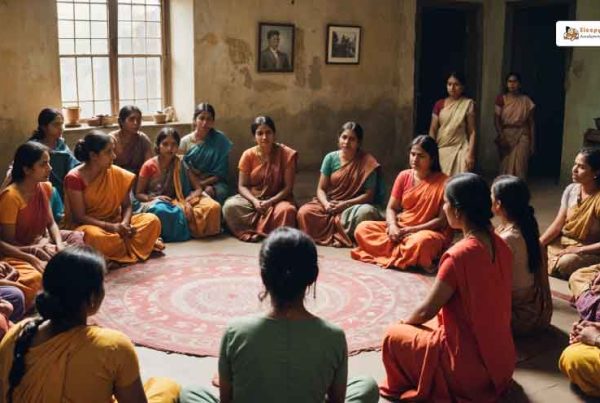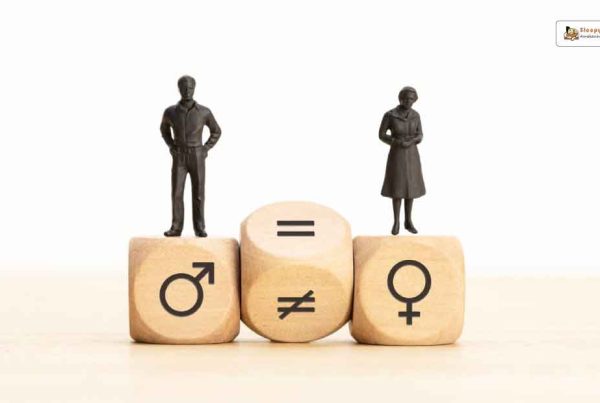Education is a powerful tool that can change lives, especially in a diverse country like India. It can help break down gender barriers and create equal opportunities for everyone. By focusing on education, we can make sure that both boys and girls have the chance to succeed. This article explores how education can promote gender equality and transform India’s future.
Key Takeaways
- Education can change social and gender norms, making them more equal.
- Government programs are helping more girls go to school in India.
- Many girls face challenges like poverty and cultural norms that keep them from getting an education.
- Success stories show that educated girls can become leaders and make a difference in their communities.
- Men also play a big role in achieving gender equality by changing their attitudes and working together with women.
The Role of Education in Promoting Gender Equality
Redefining Social Norms
Education is a powerful tool that can reshape social norms. By including gender studies in the curriculum, schools can teach students about equality and respect. This helps in breaking down stereotypes and promoting a more inclusive society.
Empowering Women Economically
Education opens doors for women to gain skills and knowledge, making them more employable. This economic empowerment allows women to be financially independent and contribute to their families and communities. It also helps in reducing poverty and improving the overall quality of life.
Challenging Traditional Gender Roles
Through education, women can challenge and break free from traditional gender roles that limit their opportunities. Learning about their rights and potential enables them to pursue careers and ambitions that were previously considered out of reach.
Education is not just about learning facts; it’s about opening minds and creating opportunities for everyone, regardless of gender.
Government Initiatives for Girl-Child Education
Policy Frameworks
The Indian government has implemented several policies to promote girl-child education. One key policy is the Beti Bachao Beti Padhao (Save the Daughter, Educate the Daughter) scheme, which aims to address the declining child sex ratio and promote education for girls. Another important policy is the Right to Education Act, which mandates free and compulsory education for all children aged 6 to 14, including girls.
Public-Private Partnerships
Public-private partnerships have played a significant role in advancing girl-child education in India. These collaborations bring together government resources and private sector expertise to create impactful educational programs. For instance, Tata Starbucks has committed to supporting 2,000 girls and young women across India through education and skills development initiatives.
Impact Assessment
Evaluating the effectiveness of these initiatives is crucial. The government regularly conducts impact assessments to measure the success of various schemes. These assessments help identify areas for improvement and ensure that the programs are meeting their objectives. The mentioned central government schemes have contributed significantly to increasing girl’s education in India.
The journey of girl-child education in India has been marked by both challenges and significant progress. Government initiatives continue to play a vital role in shaping a brighter future for girls across the country.
Challenges Faced by Girls in Accessing Education
Socio-Economic Barriers
In many parts of India, girls face restrictions on attending school or pursuing higher education, limiting their opportunities for personal growth and empowerment. Poverty is a major barrier that prevents families from sending their daughters to school. Often, girls are expected to contribute to household chores or work to support their families financially.
Cultural and Societal Norms
Cultural beliefs and societal norms can also hinder girls’ education. In some communities, early marriage is still prevalent, which cuts short a girl’s educational journey. Additionally, there is a preference for educating boys over girls, as boys are seen as future breadwinners.
Infrastructure and Resources
The lack of proper infrastructure and resources in schools is another significant challenge. Many schools in rural areas lack basic facilities like clean toilets, which can discourage girls from attending. Furthermore, there is often a shortage of female teachers, which can make parents hesitant to send their daughters to school.
Addressing these challenges is crucial for ensuring that every girl in India has the opportunity to receive an education and reach her full potential.
Success Stories and Case Studies
Transformative Journeys
Girl-child education in India has undergone a transformative journey marked by persistent challenges and progressive strides. Through case studies and success stories, several lessons and best practices emerge for promoting women’s education in India. One key lesson is the importance of community involvement in supporting girls’ education.
Future Leaders
This education program is helping hundreds of girls in India become future leaders. Growing up in India, many girls are exposed to a reality where education is not always accessible. However, initiatives like Tata Starbucks’ support for 2,000 girls and young women across India are creating education and skills development opportunities.
Community Impact
It is imperative to provide them with equal opportunities and a level playing field to excel. The vision is to transform India into a nation where every girl has the chance to succeed. Community-driven efforts have shown significant impact, proving that collective action can lead to substantial change.
Through case studies and success stories, several lessons and best practices emerge for promoting women’s education in India.
Girl-child education in India has undergone a transformative journey marked by persistent challenges and progressive strides.
This education program is helping hundreds of girls in India become future leaders.
It is imperative to provide them with equal opportunities and a level playing field to excel.
The Role of Men in Achieving Gender Equality
Changing Mindsets
Men play a crucial role in reshaping gender roles in India. For gender equality to be achieved, men must change their ways. They need to understand the importance of sharing responsibilities at home and supporting women’s ambitions. This shift in mindset can help break down traditional barriers and promote a more balanced society.
Collaborative Efforts
Achieving gender equality is not a task for women alone. Men must actively participate in initiatives and programs aimed at empowering women. By working together, both genders can create a more inclusive environment. This collaboration can lead to significant changes in societal norms and expectations.
Educational Programs for Men
Educational programs targeting men can be instrumental in promoting gender equality. These programs can teach men about the importance of gender equality and how they can contribute to it. By educating men, we can foster a generation that values and practices equality in all aspects of life.
Men need to realize that their involvement is essential for achieving true gender equality. Their support can make a significant difference in the lives of women and the overall progress of society.
International Collaborations and Support
USAID Initiatives
USAID/India and its partners work together to create programs that help both men and women. These programs aim to provide equal opportunities and a level playing field for everyone. This collaboration is crucial for accelerating progress and opportunities across India for every girl and every boy.
Global Partnerships
Global partnerships are essential in promoting gender equality in education. Organizations from around the world join hands to support initiatives that empower girls and young women. For example, Tata Starbucks has pledged to support 2,000 girls and young women in India in their first year, focusing on education and skills development.
Cross-Cultural Learning
Cross-cultural learning helps in understanding different perspectives and finding better solutions. By sharing knowledge and experiences, countries can learn from each other and improve their own education systems. This exchange of ideas is vital for creating a future where every child can reach her or his full potential.
Growing up in India, many girls face challenges that hinder their education. International support can make a significant difference in overcoming these barriers.
Future Vision for Gender Equality in India
It is crucial to offer equal opportunities and a fair chance for everyone to succeed. The goal is to transform India into a country where all individuals have the same chances to thrive. Achieving gender equality in India requires a shift in the mindset of Indian men. They must understand the importance of changing their behavior. Education plays a significant role in promoting gender equality in India. Addressing the issue of gender disparities is essential. Rebecca Winthrop explores the topic of gender inequality in India and suggests that education can help reshape social and gender norms. The Indian government has long acknowledged the significance of women’s empowerment, gender equality, and access to education in its societal development.
Conclusion
In conclusion, education is a powerful tool that can transform India’s future by promoting gender equality. By ensuring that both boys and girls have access to quality education, we can break down the barriers that have long held back many in society. Education empowers girls to dream big, achieve their goals, and become leaders in their communities. It also helps boys understand the importance of equality and respect for all. The journey towards gender equality in India is ongoing, but with continued efforts and commitment, a brighter and more equitable future is within reach for everyone.
Frequently Asked Questions
How does education help in promoting gender equality in India?
Education helps change social and gender norms. It empowers women to take up jobs and challenge traditional roles.
What are some government initiatives for girl-child education in India?
The government has policies and partnerships with private sectors to support girl-child education. They also assess the impact of these initiatives.
What challenges do girls face in accessing education in India?
Girls face barriers like economic issues, cultural norms, and lack of resources and infrastructure.
Can you share some success stories of girls benefiting from education in India?
There are many success stories where girls have become leaders and brought positive changes to their communities.
What role do men play in achieving gender equality in India?
Men need to change their mindsets and work together with women. Educational programs for men can help in this transformation.
How do international collaborations support gender equality in India?
International collaborations like USAID initiatives and global partnerships help by sharing knowledge and resources to support gender equality.








